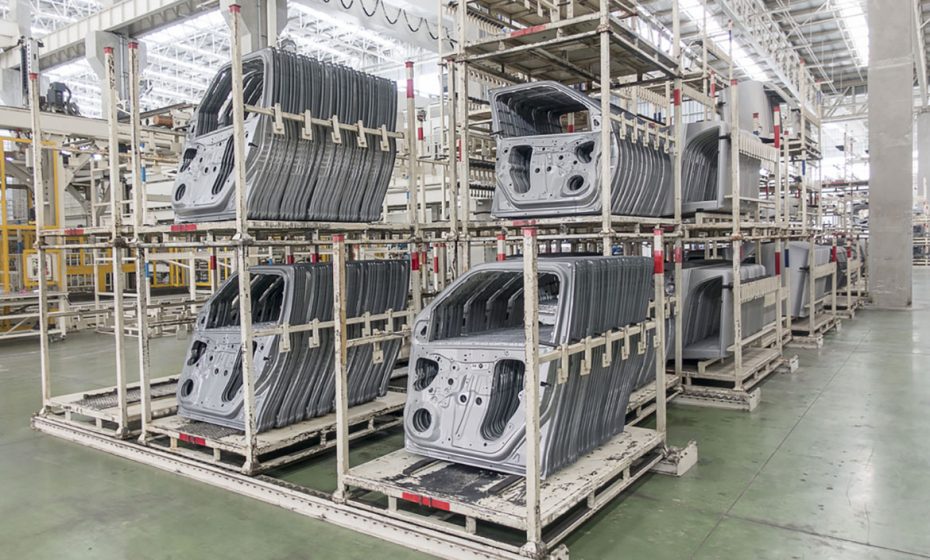
The automotive industry is made up of dozens of different tiers of suppliers. Understanding the different tiers and how they fit together will help you maintain control over the supply chain. The players in the industry, the more complicated these tiers can become. Learn more about tier suppliers and how they keep the automotive industry running.
Definition for Tier Supplier
Supply chain managers often separate suppliers into tiers as a way of breaking down the system. The grid usually takes the form of a triangle. The original equipment manufacturer (OEM) sits at the top of the chart, usually occupying the first tier.
Suppliers are then listed in the second, third and fourth tiers based on their proximity from the OEM. The tiers can keep going to the nth degree based on the number of suppliers in the system.
The second tier is reserved for the OEM’s direct suppliers, usually companies that make finished products that go into the finished automobile. This may include a variety of parts and accessories.
The third tier is for indirect suppliers that manufacture goods for direct suppliers. This usually refers to parts and supplies that go into the parts and accessories used in the vehicle.
The fourth tier is then used for indirect suppliers that are further removed from the OEM, such as those that supply raw materials or individual parts.
The tiers aren’t always set in stone. Some companies will fluctuate between these tiers. For example, a company will occupy both the second and third tier if they sell goods to OEMs and Tier 1 suppliers.

Example of a Tier Supplier in the Automotive Industry
Here’s an example of what the graph would like for a typical OEM:
- Tier 1: Final assembly of the automobile.
- Tier 2: Tires, computer systems, GPS modules, engine system, cockpit, door system, transmission headlights, steering wheels and other essential components of the car.
- Tier 3: Locking systems, frames, handles, cables, cladding, windows, axles, gears and other individual parts.
- Tier 4: Rubber, steel, nuts, bolts, upholstery, leather, glass and other raw materials.
As you can see, each tier deals with different types of products and goods. They each specialize in a different aspect of the vehicle, which can improve the overall quality of the products.
Challenges Between Tiers
To produce finished products, every tier needs to work together. The lowest tiers ship supplies and raw materials to the middle tiers, who then ship their products to the OEM for final assembly.
Suppliers at every tier should ship goods and materials in a pallet container to avoid delays. The container is designed to fit onto a pallet for easy handling.
Industrial metal storage bins are perfect for storing metal parts and supplies. Facilities can use this equipment to protect inventory during transit.
Browse used Plastic Pallets and Crates
If a company fails to keep up their end of the bargain, the entire supply chain can fall apart, leading to higher prices and long wait times. These facilities can’t function if they don’t have everything they need to manufacture their products.
That’s why communication is key. Every tier or player should do their best to mitigate delays and problems that can stall production. Companies use predictive data analytics to anticipate demand for their goods so they can order more supplies before they run out. If anything goes wrong along the way, each player should contact the other parties involved so they can plan accordingly.

OEMs and top-tier companies will often partner with multiple suppliers to prevent shortages and delays. If their main supplier is struggling to find supplies or grappling with local regulatory issues, they will call the second supplier, which means interacting with a whole new set of lower tiers. These suppliers should be in separate regions to reduce the risk of delays. The entire industry may be facing a shortage of materials. In this case, switching to a new supplier may not help the situation.
These tiers are linked in more ways than one. They represent critical components of the automotive supply chain. Use metal storage bins and other reusable shipping containers to keep auto parts and supplies moving from tier to tier so the OEM has everything it needs to manufacture and distribute the finished product. This keeps the industry running at peak efficiency.
Image credits:
Chamil/shutterstock.com
Artic_photo/shutterstock.com
hedgehog94/shutterstock.com
